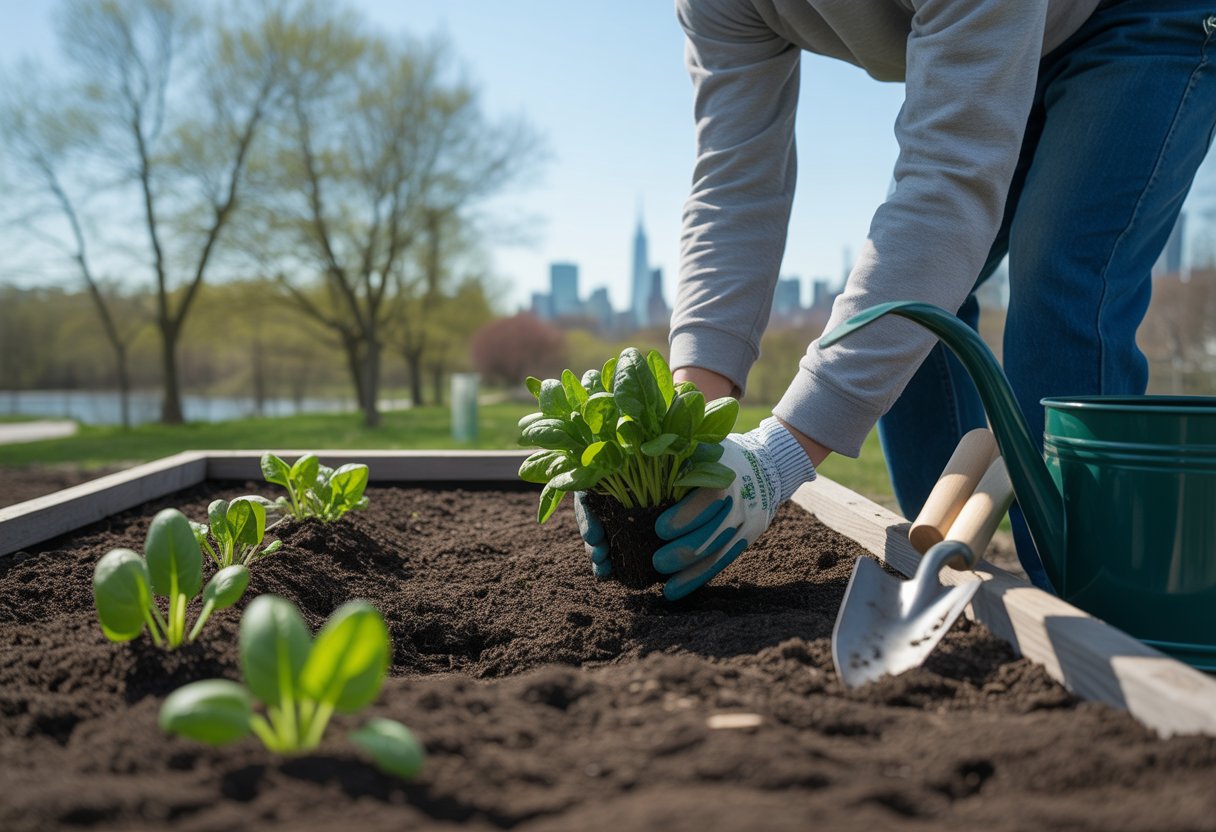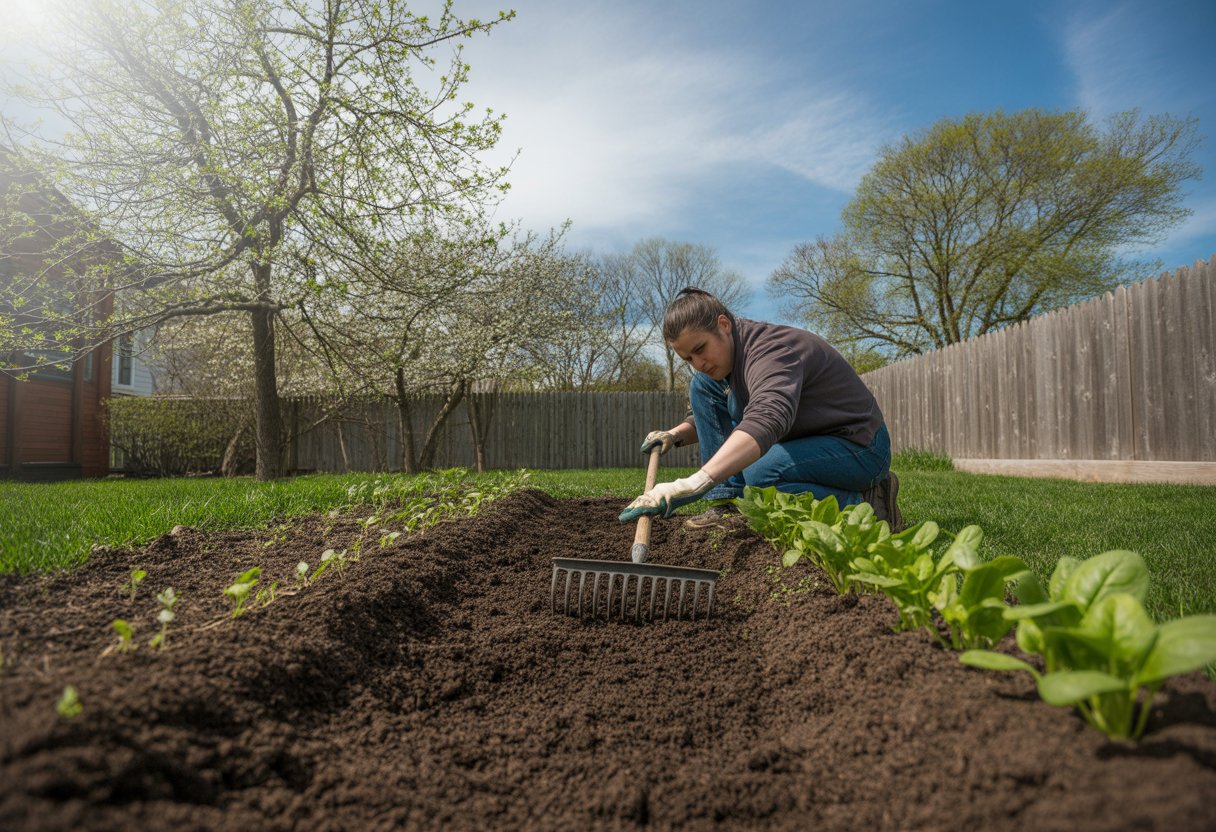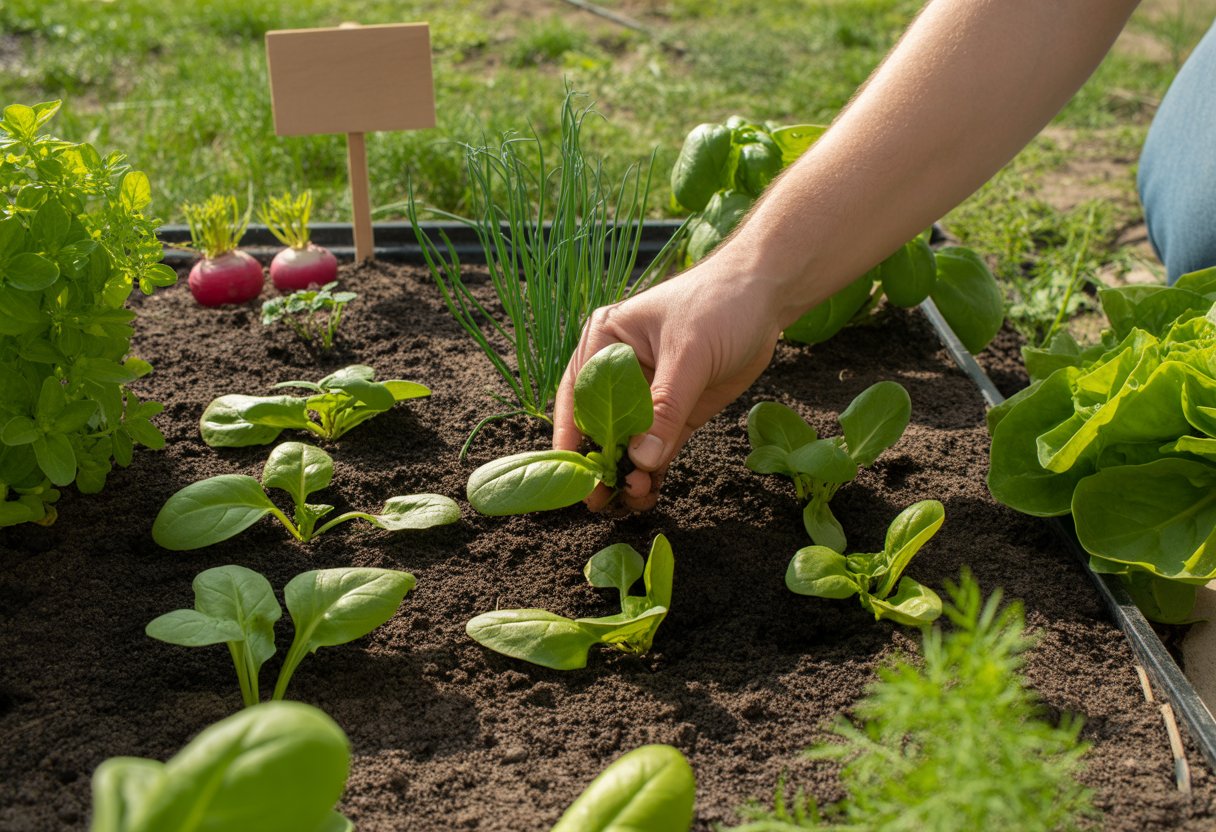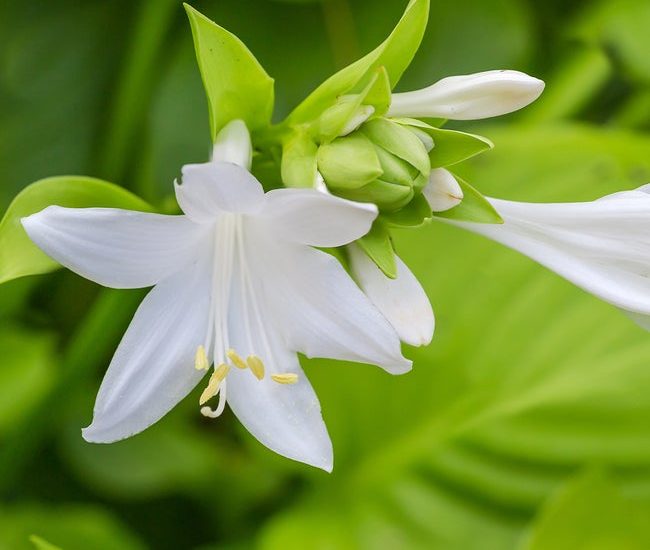When to Plant Spinach in New York for Optimal Growth and Harvest
Spinach really likes cool weather, so the timing of planting matters a lot for good yields in New York. In most areas, the best time to plant spinach is between early March and mid-April for spring crops, and again in late August for a fall harvest.

If you plant too late, hot weather can make spinach bolt. Too early, and the seeds might struggle to germinate in cold soil.
Gardeners who keep an eye on soil temperature and local frost dates usually see better results with spinach. Timing the window right gives you tender, tasty leaves and a strong crop.
This guide digs into how to time your spinach planting for New York’s climate zones and seasonal quirks.
Understanding the Best Time to Plant Spinach in New York
Planting spinach in New York really comes down to local climates, frost dates, and zoning. The timing can make or break your harvest.
If you know your region’s specifics, you can really nail the planting schedule.
Optimal Planting Windows for Different Regions
New York’s climate is all over the map, so planting times aren’t one-size-fits-all. Upstate, you’ll want to plant spinach from early April to late May for spring. For fall crops, aim for mid-August to early September—otherwise, the heat can stress your plants.
Downstate, including NYC, you can start earlier in spring—late March through April is safe. Fall planting can stretch into early October since autumns are milder.
Spinach likes cooler soil, ideally around 50°F to 60°F. Planting outside these windows can stunt growth or trigger bolting. It’s worth checking your exact location and watching local weather for the best results.
The Role of First Frost Dates in Planting
First frost dates matter a lot for spinach. While spinach thrives in cool weather, hard freezes can damage the crop.
If your region’s average first frost is October 15, for example, planting in early September gives your spinach time to mature before the cold hits. For spring, wait until after the last frost to avoid harming seeds.
You can look up frost dates from the National Weather Service. It’s also smart to watch local forecasts, since the climate can be unpredictable these days.
Using Hardiness Zones for Planting Decisions
New York covers USDA hardiness zones 3 to 7, and that changes the planting game. In zones 3 and 4—think Adirondacks—your best bet is May and August.
Zones 5 and 6, which cover central New York, give you a wider window from mid-April through September. Zone 7, near the coast, means you can plant earlier in spring and harvest later in fall.
Pick spinach varieties that fit your zone and frost risk. When you match that with frost dates and local climate data, your chances for a solid crop go up.
Preparing for Successful Spinach Planting

Getting the timing and soil right makes a big difference for spinach in New York. You’ll want to manage soil temperature, boost fertility, and maybe use rowcover to protect young plants.
Assessing and Managing Soil Temperature
Spinach seeds sprout best when the soil’s between 45°F and 68°F. If it drops below 40°F, germination slows way down. Above 75°F, seeds might not sprout at all.
Grab a soil thermometer and check a couple inches down before planting. If it’s too cold, maybe wait a bit or try black plastic mulch to warm things up. In early spring, sometimes just covering the soil helps trap heat. Keeping an eye on temperature can really help your spinach get off to a good start.
Soil Preparation and Fertility Requirements
Spinach likes well-drained, loamy soil with a pH between 6.0 and 7.5. Test the soil’s pH and nutrients before planting so you know what you’re working with.
Mix in compost or old manure to bump up organic matter and improve the soil’s structure. Spinach needs plenty of nitrogen for those leafy greens—about 20-30 pounds per 1,000 square feet does the trick. Don’t skip phosphorus and potassium, either, since they help with roots and disease resistance. Good soil prep pays off with better moisture and nutrient availability.
Using Rowcover to Protect Early Crops
Lightweight rowcover materials can keep spinach seedlings safe from frost and pests, but still let sunlight and rain through. Rowcover can warm the soil by a few degrees, making germination and growth a little faster.
Use stakes or hoops to keep the fabric off those delicate leaves. On sunny days above 70°F, pull the covers back to avoid overheating. Rowcover is worth it if you want to stretch the planting window or dodge those late spring cold snaps.
Planting Strategies and Companion Planting Options

Spinach does best when you pick the right planting method and companions. Timing, plant neighbors, and staggered sowing all play a part in getting more from your garden.
Direct Sowing vs. Transplants
Most folks in New York direct sow spinach seeds because the plants handle cold well. This lets roots settle in without transplant shock.
Sow seeds about ½ inch deep in early spring, as soon as the soil hits 40°F. If you want a head start, you can start transplants indoors 4 to 6 weeks before the last frost. This can mean earlier harvests if the weather’s slow to warm up.
That said, spinach roots are delicate, and sometimes transplants don’t love being moved. Pick your method based on your weather and schedule—both can work if you get the timing right.
Recommended Companion Crops
Spinach gets along with a bunch of veggies and herbs. Some favorites:
- Lettuce and arugula: They grow at similar rates and don’t hog nutrients.
- Carrots and leeks: These root crops like the shade spinach provides and can benefit from fewer pests.
- Herbs like dill, cilantro, and mint: These help keep aphids and other pests away.
- Certain flowers such as nasturtiums bring in helpful insects that protect spinach.
Try to avoid planting spinach near potatoes or strawberries. They can compete for nutrients or, worse, up the risk of disease.
Succession Planting for Continuous Harvest
If you want a steady stream of fresh spinach, succession planting really makes a difference. Try sowing new spinach seeds every 2 to 3 weeks from early spring right through to mid-summer.
Spacing out your plantings helps prevent overcrowding. Plus, you’ll always have new crops coming in as you pick the older ones.
As summer heats up, spinach appreciates a bit of shade to keep it from bolting too soon. Some folks mix direct sowing and transplants to better match their harvests with how much they actually want to eat.
Following local planting schedules? That can help you hit those perfect harvest windows. And honestly, mixing things up this way can even throw pests and diseases off their game.


